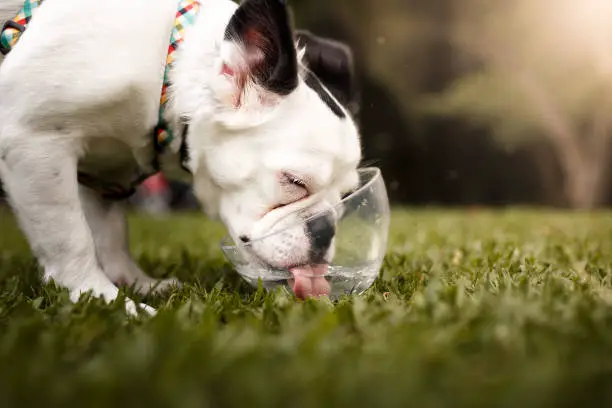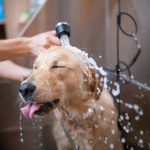Dog grooming requires nail clipping, which can be difficult. Nail clippers can convert a traumatic encounter into a routine grooming process. However, with so many clippers, choosing one for your dog might be difficult.
Learning Dog Nail Anatomy
To choose the best dog nail clipper, you must understand nail anatomy. Dog nails have a quick with nerves and blood vessels in addition to hard keratin. Cutting into the quick hurts the dog and can cause bleeding, so nail clipping must be precise.
Dog Nail Clipper Types
The market has scissors, guillotine, and grinder nail cutters. Large breeds with stronger nails benefit from scissors-like clippers. They provide strength and control for cutting harder nails. Guillotine clippers, are best for medium-sized dogs, having a hole for the nail and a blade that cuts down when squeezed. For dogs afraid of clipping, grinders can grind down the nail instead of clipping, reducing the risk of cutting into the quick.
Nail Clipper Selection Factors
Your Dog Size
The correct nail clippers depend on your dog’s size. Larger animals with longer nails need stronger clippers, while smaller breeds need smaller clippers for precision and control.
Comfort and Confidence
Your comfort with the instrument is as vital as its dog-suitability. Clippers should be comfortable to hold and not demand too much force to cut nails to avoid accidents or uneven cuts.
Safety Features
Find clippers with fast guards to prevent over-trimming. However, these guards are not infallible, so learning your dog’s nail anatomy is still important.
Dog Nail Condition
Your dog’s brittle or easily split nails may require a different clipper than their robust nails. A grinder may be beneficial in certain circumstances because it reduces splitting.
Canine Temperament
Your dog’s disposition matters. Grounders are quieter and may be better for anxious or terrified people. Squirmy dogs may benefit from scissor clippers.
Maintaining and Lasting
Choose clippers that are robust and easy to clean. Dull clippers make nail clipping harder and more uncomfortable for dogs, so they should be solid and long-lasting.
Trimming Safely
Safe trimming is essential after choosing the proper clippers. Be sure your dog is used to having their paws handled before trimming their nails. Instead of cutting into the quick, trim little sections of nails. Cut the quick accidentally? Have styptic powder on hand to staunch the bleeding.

Trimming Frequency
Dog nails need regular clipping to stay healthy. The frequency depends on your dog’s activity and nail growth. Since hard surfaces file nails, dogs walking on them may need fewer cuts.
Regular Grooming with Nail Trimming
Make nail clipping part of your dog’s grooming routine to get acclimated to it. Consistency and calmness lessen nail clipping anxiety for you and your dog.
Seeking Professional Help
If you’re not comfortable clipping your dog’s nails, get a pro. Professional groomers and veterinarians can provide service and advice.
Nail Trimming Emotions
Remember that some dogs get emotional during nail trimming. Use patience and positive encouragement. Treats and praise during and after trimming might make it feel good.
Finally, picking the best dog nail clippers requires understanding your dog’s needs, your preferences, and safety. Nail clipping can be a stress-free component of your dog’s grooming regimen with the appropriate gear and method, improving their health.
Nailing is an important part of canine maintenance, but haircutting and bathing are more obvious. However, its health and comfort benefits make it a crucial, if often ignored, aspect of canine grooming.
Knowing You Need Regular Nail Trimming
Due to their comfortable lifestyles, dogs’ nails don’t wear down as quickly as they would in the wild. Foot pain, posture disorders, and bone deformities can result from overgrown nails. This makes frequent nail cutting a health and esthetic issue.
Preparing Your Dog
The first step to successful dog nail clipping is preparation. Get them used to having their paws handled. Touching and holding their paws during calm moments can desensitize them. Spreading the clipping process across days or weeks can help frightened canines get used to it.
Selecting Tools
Nail clippers come in scissor, guillotine, and grinder styles. For large dogs with stronger nails, scissors are best, while guillotine clippers work for smaller breeds. Grinders are helpful for dogs fearful of clipping sounds or who need a slower approach.
Getting Trimmed
Hold your dog’s paw gently but firmly during cutting. Put a little piece of nail in the clipper opening and squeeze quickly. Start by cautiously introducing a grinder to your dog, then gently grind the nail tips.
Avoiding Quick
Trim clear-nail dogs until the quick begins as a small pink dot. For dogs with dark nails, clip little amounts at a time and check for a chalky ring when nearing the quick.

Handling Accidents
Even with the utmost care, accidents might happen and you may steal the quick. Stay calm if this happens. Stop nail bleeding with styptic powder. Keep cool and comfort your dog—your reaction can affect their view of nail clipping.
Adding Nail Trimming to Grooming
Include nail cutting in your grooming routine to reduce tension. Once your dog is bathed and rested, or during a quiet cuddling, is ideal. Regular cutting maintains nail length and recedes the quick, making future trims easier.
Positive reinforcement, rewards
Treats and praise during and after nail clipping promote pleasant associations for your dog. Reward them after each paw or nail at first to create pleasant associations.
Knowing Your Dog’s Limit
Dogs may never like nail clipping. Knowing your dog’s limits and not overworking them is crucial. If your dog is extremely stressed or afraid, split the clipping into several short sessions or visit a groomer or vet.
Professional Grooming
Professional groomers can trim nails efficiently if it’s difficult. They are experienced with frightened dogs and can finish fast, reducing stress for you and your dog.
Regular Exercise and Hard Surfaces
Regular walks, especially on concrete, can naturally file down your dog’s nails. While this doesn’t replace trimming, it can minimize its frequency.
Care After Trimming
File the edges after trimming to avoid your dog from scratching you or themselves. For comprehensive paw health, inspect paw pads for wounds, fissures, and foreign objects.
Including Nail Clipping in Health Check
Check your dog’s paw health during nail trimming. Check for infections, injuries, and anomalies. Regular examinations can detect abnormalities early, making treatment easier and more successful.
Finally, nail cutting is an important part of dog care that improves their health and comfort. With the correct tools, skills, and patience, it may be a bearable, if not stress-free, element of your dog’s grooming routine. Remember to make trimming your dog’s nails as comfortable and happy as possible.










Leave a Reply